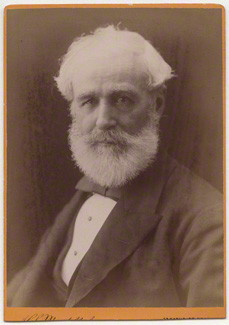In 1849, Robert Rawlinson visited Birmingham to assess the public health of the town. Rawlinson was one of the first inspectors employed by the government under the Public Health Act of the same year. Whilst in Birmingham, Rawlinson received reports from local doctors and listened to complaints about substandard housing conditions and the limitations of the fresh water supply. The resultant report would ultimately lead to the amalgamation of Birmingham’s many administrative bodies under a single authority of the town council.
The report, available to view at the Local Studies Centre, Library of Birmingham, is comprehensive and includes details of the town’s geographic features and a brief history before revealing some of the serious public health issues facing the local community. Public health had not really been a great national issue before the 1842 publication of Edwin Chadwick’s ‘The Sanitary Condition of the Labouring Population in Great Britain’. Below is an extract from the Report showing the information that local doctors provided in response to a request from Rawlinson. For the purpose of the investigation, the town was divided into districts and local doctors appointed to report on each.
Birmingham was, perhaps rightly, proud of its successful deflection of ‘King Cholera’ during the devastating outbreaks in the 1830s. However, as the report below reveals, this shouldn’t be taken to mean that Birmingham was any healthier than other industrial centres at that time. Many of the outbreaks were attributed to poor sanitation and lack of fresh water. The majority of Birmingham’s houses had been built in the early part of the nineteenth century, generally without any sort of planning control. As a result, they quickly deteriorated and became unfit for purpose.
n.b. ‘varicella’ is chicken pox
District A: – Dr. Hinds
- In August 1848, there were 5 or 6 cases of typhus in Court No. 3, Sheepcote Street, resulting in several deaths.
- Court No. 1, Cottage Lane – Smallpox and Varicella
- Steward St the whole of Spring Hill; Eyre St; Edmund St – especially courts 9 & 4,Nelson St., Union Court in Mill St., Brasshouse Passage, Baskerville Place, Lower Camden St., Barrack yard and others in its vicinity – reports of typhus and scarlet fever, rubeola (sic.) and dysentery
District C: – Mr. Clarkson
- Henrietta St., Water St., Fleet St. and Little Charles St. – typhus, scarletina (sic) diarrhoea
Mr Clarkson further reported that, ‘when these diseases again prevail, I have no doubt they will fall upon these spots severely unless in the mean time they are much improved in their sanitary condition’
District D:- Mr. Roden
- Hospital St; Upper Hospital St; Upper Tower St; Farm St; George St; Hampton St; Hockley St; Harford St; Howard St; and William St. North – incidents of fever, measles, erysipelas (a sort of cellulitis caused by streptococcus), smallpox and diarrhoea
District E:- Mr. Jones
Bagot Street: the dwelling house of 4 court, 5 house occupied by Ingrams is in filthy and unwholesome condition, having been the nucleus of typhus fever since the beginning of August, 1848, and requires first the removal of its inmates; second the fumigation of the house by chlorine (this was Mr. Jones full report)
District F – Mr Field
Instances during the quarter ending December 30th, 1848:
- Influenza – Princess St., Stainforth St., Snow Hill, Loveday St., Slaney St., Lench St., Weaman St., Price St., Brickiln St., and Steelhouse Lane
- Diarrhoea – Steelhouse Lane almshouses, Lancaster St., Staniforth St., Slaney St., Snow Hill, Weaman St., Loveday St., Princess St., Price St., Whittall St., Shadwell St., and Balloon (sic) St.
- Measles – Stainforth St., Cotterills
- Scarlet Fever – Lench St., Lancaster St.
- Dysentery – Stainforth St.
District H – Mr Hill
No epidemics reported, but ‘scattered cases’ of typhus, measles, scarlet fever and hooping-cough (sic) at Old Inkley’s, New Inkley’s, Myrtle Row, Green’s Village, Tonk St. and Hill St.
District I – Mr Badger
- Cheapside – diarrhoea, scarlet fever and measles all ‘very prevalent’
- Essex St. – fever
- Barford St. – diarrhoea and fever
- Nelson St. south – Scarlet fever
- Edgbaston St. – fever, measles and diarrhoea ‘prevalent’ – ‘Court 15 is scarcely ever free from fever’
District K – Mr Sproston
‘There has been no disease in my district since the 1st November last, of either an epidemic or endemic nature’ – Mr Sproston suggests this was surprising given ‘locality and class of people living in it, consisting as it does of the low Irish, whose habits generally are of the most filthy kind’. He goes on to reveal that the district had ‘a very bad and insufficient supply of water’ with no water at all available in some parts and the sewerage and drainage ‘defective’. He expresses that an inspection of this part of town would be beneficial.
The remarks on the local Irish community appear shocking to us today, but I have come across similar attitudes in other literature of the time, including Friedrich Engels Condition of the Working Class in England, written in 1844.
District L – Mr Simons
Mr. Simons called attention to state of drainage in several courts on Duke Street and Sheep Street ‘in consequence of their being below the level of the streets in which there is no main sewer’. Suggests that many of the courts were covered with pools of water and ‘stagnated filth’ which in some parts was a foot deep ‘this all runs into a cistern from which it is pumped into a well as occasion may require’.
Simons also states that, when visiting patients in Masshouse Lane, bricks had to be placed down to form an elevated footpath above the pools of water – again because of no drainage. He stated ‘the state of things unless removed may tend to produce fever and other contagious diseases’.
